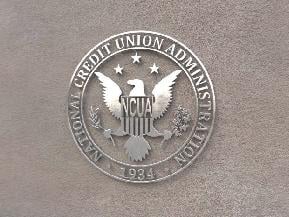BILOXI, Miss. – The Katrina property damage at the $1.4 billion Keesler Federal Credit Union could have been a lot worse and so could have loan write-offs, but there are plenty of lessons learned when it comes to disaster preparedness. “You know when the power went out, our backup generators worked beautifully and we were able to stay open, but I’d say our biggest breakdown came in direct phone communication with the branches since for a long time we had none,” recalled John Goff, senior vice president and chief administrative officer. Though two branches were shut down by the storm because of water damage and the CU had to transfer call center operations to Pensacola, Fla., Keesler’s main office was spared which meant the computer main frame remained intact. “But the big problem was in communicating with our 13 branches when the phone lines were down,” said Goff who like other Keesler CU executives credit Pen Air FCU in Pensacola, with providing crucial technical assistance. Underscoring a host of Katrina changes already undertaken, Keesler is planning the purchase of a new satellite communication system plus 10 satellite phones for managers while also converting all phones to a voice-over Internet protocol. In detailing lessons learned from Katrina, Goff was among a group of Gulf Coast CU executives who spoke on disaster preparedness at the California Credit Union League’s Big Valley Educational Conference in Monterey. Apart from the technical aspects, Keesler’s President/CEO Scotty Broome told Credit Union Times that loan delinquencies have remained surprisingly low due in part to FEMA and Red Cross funds providing members a financial cushion. “We just have not seen any substantial losses in our portfolio and I’d say we’re in very good shape,” declared Broome in providing a post-Katrina assessment adding Keesler’s net worth ratio remains at 8.6%, down from the 11% at the time of the storm. Like banks and CUs across Mississippi and Louisiana, Keesler has witnessed a huge deposit influx of FEMA, Red Cross and insurance settlement money. Some institutions, it was reported, have seen a 40 to 60% asset surge during the last four months. Keesler, as the state’s largest CU, did experience a drop-off of 34 employees who were displaced or left the institution, but their ranks have slowly been filled, though Broome admits that like other employers in the Gulf Coast, “it’s hard to find qualified employees.” During the Aug. 29 storm, Keesler did lose one of its downtown Biloxi branches in the casino district and there are no present plans to reopen there, but the CU does plan to reopen in April its once new but flood-damaged branch in hard-hit Bay St. Louis/Waveland. That branch has been servicing members at a double wide trailer on the site. Keesler also plans an April opening for a damaged branch on Keesler Air Force Base. Joining other Gulf Coast CEOs, Broome expresses gratitude to CUNA, the National Credit Union Foundation, the Mississippi Credit Union Association, and CUs across the U.S. for coming to Keesler’s aid. Pen Air, for one, provided a mobile trailer for the Bay St. Louis Waveland office. Broome said Keesler has been diligent in extending loan terms and developing workout plans with members who are in financial difficulty having lost jobs and homes. Delinquencies and loan losses do remain a “moving target,” because of extensions, observed Broome. “Even though loans were extended, we believe the outcome is more than manageable,” he concluded. -




 Copyright © 2024 ALM Global, LLC. All Rights Reserved.
Copyright © 2024 ALM Global, LLC. All Rights Reserved.










